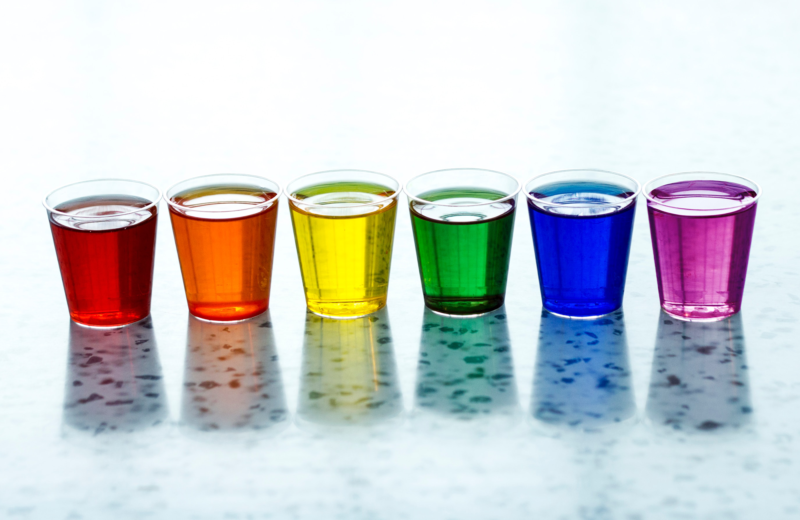When you need to take a tinkle, the first thing you probably think about doing after you are finished is flushing the toilet as quickly as possible. But did you know that it could actually be very beneficial to take a quick peek into the toilet every so often? Now you’ve probably heard about how the color of your urine can let you know whether or not you are hydrated or need to drink some more fluids. But did you also know that the color of your pee can actually give you great insight about your health?
While the color of your pee will change on a daily basis and is typically no cause for alarm, however it is never going to be wrong for you to consult with your doctor if you have any concerns about anything at all. Here is exactly what you should know about the color of your pee and whether or not it’s normal, if it’s not normal, and what exactly it is that can be making it that color.
What Color Should My Pee Be?
There is a good chance that when you do urinate, you notice that your pee is not always the same color. This is because there is not one ‘normal’ color that urine should be, but it should fall onto the yellowish spectrum. And as a general rule of thumb, the more water you drink during the day, the more transparent you should expect your urine to be. If you notice that your pee is on the paler or whiter side, it simply means that all of the water that you have been drinking is being passed through the kidneys and is simply more diluted. If it doesn’t however, it can be an indicator that there is something going on that shouldn’t be going on.
This means that the more water you are drinking throughout the day, the clearer your pee is more than likely going to be. So remember that when your pee transparent yellow or pale urine, all it means is that you are very well hydrated. While it is extremely rare to drink more water than you should, you will more than likely be able to cut back a little if your pee comes out completely transparent.
Darker Colored Yellow Pee
If you happen to notice that your pee is more of an amber, honey, or even more of a dark orange color, it is a good indicator that you have not been drinking enough water and your body is starting to become dehydrated. When you start to become dehydrated, your body is going to naturally hold onto more water in order to protect itself. Since your body is not going to be releasing as much water, your urine is going to become darker and darker than if you were properly hydrated.
Besides just having darker colored urine, some of the other signs of dehydration include chills, fatigue, sugar cravings, bad breath, and even muscle cramps. To combat this, you first want to try and drink some more water throughout the day. A good rule of thumb is to try and drink a minimum of between 1.5 and 2 liters of water on a daily basis, on top of all your other fluid intake. If that doesn’t seem to correct the problem, you are going to want to schedule a doctor’s visit to make sure that it is not something more serious.
Before you schedule your doctor’s visit though, just know that some of the side effects of certain medication is that it will give your pee an orange or darker yellow hue. This includes phenazopyridine, which is one of the main medicines that is prescribed to help treat UTI (urinary tract infection) pain, as well as sulfasalazine, which is used to help treat ulcerative colitis.
Dark Brown Pee
Have you noticed that when you go pee it looks like somebody just dumped a brown ale, Coca-Cola, or tea into the toilet? Some of the foods you eat can be responsible for this. These foods include:
- Aloe
- Rhubarb
- Fava beans
But if you have not been eating these foods lately, it can be something else. In fact, dark brown pee can potentially represent the next step past dark yellow or orange pee, a warning sign that you are now extremely dehydrated and should start hydrating immediately.
The exception to this though, would be if you have recently gone through any type of urologic procedures. If so, then the brown urine that you are seeing may be related to blood that is slowly dissolving within your urine. Another reason may be that you are taking antibiotics and one of the side effects is that your urine will start to appear a brown color. These antibiotics include nitrofurantioin and metronidaxole.
If you are not able to identify with any of these reasons, your dark brown pee can also be an indication that there is something much more serious that is wrong with you. One of the possible concerns is going to be your liver. If you have poor liver function, it can show in the form of your pee being either dark yellow or brown.
Another reason for the brown urine may be from a history of melanoma. When you have melanoma, your pee is going to turn brown, as it may indicate that there are trace amount of melanin in it, which has been associated to the likes of cancer.
If you began to notice that your urine is regularly a dark brown color, you are going to want to schedule an appointment to see your doctor as soon as you are able to. Just remember that just because you have brown urine, it doesn’t automatically mean that there is something wrong.
Pink or Red Pee
Have you been eating a lot of rhubarb, blueberries, or beets recently? When you eat these particular foods, your body can change your urine’s (as well as your stool) color to have a pink or red tint. While some medications can also do this as a side effect, the main culprits would be the antibiotic rifampin or the medication phenazopyridine.
With that being said, if you are not taking those medications and have not been eating those foods, you may be seeing blood in your urine. If this is the case, you are going to want to schedule a doctor’s appointment to help rule out kidney stones, a UTI, or many other conditions that it could be. Whenever you see blood in your pee, you are going to want to visit your doctor, no matter what the situation may be. With that being said, if you do have any type of medical condition that is affecting your urinary tract (such as a history of kidney stones or recurrent UTIs) is closely monitoring all of their urine for even the smallest presence of blood.
Green or Blue Pee
If you see that your have green or blue pee, try your best not to panic too much. While this can easily be the absolute scariest color of urine to see when you are in the bathroom, there is more than likely an innocuous explanation for it. It can be linked to some type of dye that was present in something you have recently eaten, or a particular medication such as anti-inflammatory drugs or antidepressants. These can all cause your urine to start appearing green or blue in color. Chances are that it is just a certain medication that your are taking and is more than likely nothing to worry about.
The one exception to this would be if your green or blue pee were a sign for familial hypercalcemia, which is also referred to as blue diaper syndrome. The chances of this happening however, are extremely low as blue diaper syndrome is a very rare genetic disorder.
When it comes to your health, not many people are going to be looking in the toilet on a regular basis. However, when you incorporate occasional glances into the color of your urine, it will be able to tell you a lot about what is going on within your body. The darker your urine is, the more dehydrated that you are getting. If this is the case, you are going to simply want to start drinking more fluids on a regular basis until you are able to get your urine back to the pale yellow color.
If your pee comes out a different color, such as dark brown, pink, red, green, or blue, there is a good chance that it can be something a little more serious going on. Just be sure that if you do notice your urine being a different color than normal, that you call your doctor and schedule an appointment as soon as you can. This is the best way that you can make sure that there is nothing wrong with you and the discoloration is simply from eating certain foods or taking certain medications.

